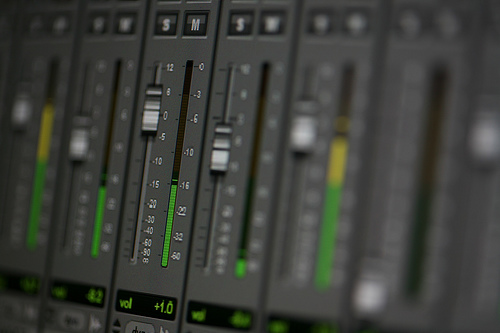In part 1 of our look at templates, I shared how I use session templates for recording sessions. In part 2, I share how I use separate templates for mixing and songwriting.
Mix Templates
As you probably noticed in my last post, I referred to the template used for recording as a “tracking template”. This is because I create a whole new session for mixing for each song using an entirely different template.
After tracking is completed, each part will be comped and edited. I will then create a whole new session from my general mix template. This mix template is specific to my mixing process and includes plug-ins and effects, unlike the tracking template. I will save the new session as a subfolder in the song’s original sessions file tree but assure it’s noted as the mix session. I then go through and import my final audio files by channel into the mix session and hide and make inactive any channels not being used or add them as needed.
While it sounds complicated, creating a separate mix session for each song and importing audio has a number of benefits. First, the size of the mix session is much smaller because I don’t have all of the audio files from all of the takes from the tracking session. This means, if I have to send the mix session to someone, I can do it quickly and easily. It will also take less time to back up my system because the file size is smaller. Secondly, all of my busses, effects, and inputs and outputs are assigned already so I can start mixing within a matter of minutes after importing the audio files rather than having to retrofit the tracking session template to satisfy my mixing needs. This helps make the mix setup process less tedious.
Finally, as with the tracking template, if I’m mixing a full album and I get my first song mixed, I’ll save that mix template as a new template to my template library specific to that project. While settings on most channels change from one song to the next, it certainly helps to have a starting point if everything was recorded at the same time.
Songwriting Templates
One of the other things I use templates for is quickly capturing songwriting ideas at my house. When I’m playing guitar at home, I find myself, quite often, coming up with a cool rhythm part, looping it using the delay pedal on my pedalboard, and then playing over the top of it. Sometimes, I’d go three or four parts/overdubs deep and come up with some very useable material for a song only to power down my pedalboard at the end of the session, deleting the loop and overdubs forever.
What I ended up doing, because my practice space at the house is also my office, was putting a microphone on my practice amp and organizing a simple template in Pro Tools so that, if I came up with something cool, I could create a new session quickly, record the part, add parts over the top, and never lose the creative spark setting up to record.
The template is REALLY basic. One channel has a sequencer on it that I can use to come up with a simple drum part. One channel is setup with a DI box on it so that I can use an octave pedal on my pedalboard and record a bass part. Four other channels are setup using the input my microphone for my guitar amp is assigned to. I then have mix busses and effects setup already.
Using this simple template, I can come up with an idea, record it quickly, add percussion and bass to it, and then mix it all without losing the creative spark. Everything I need is already in the template.
Final Thought on Templates
Once I’m done with a session, I always copy my customized templates into the session folder with the audio and session files. This allows it to be backed up with the session.


